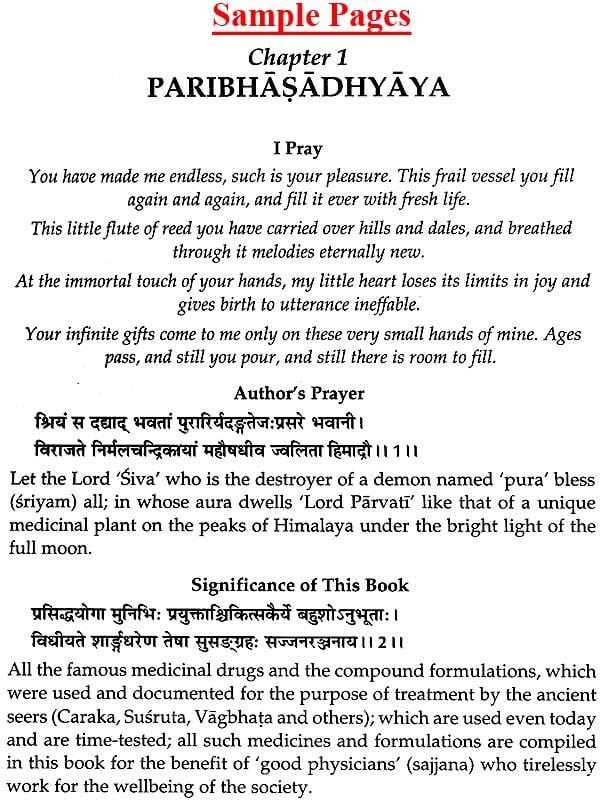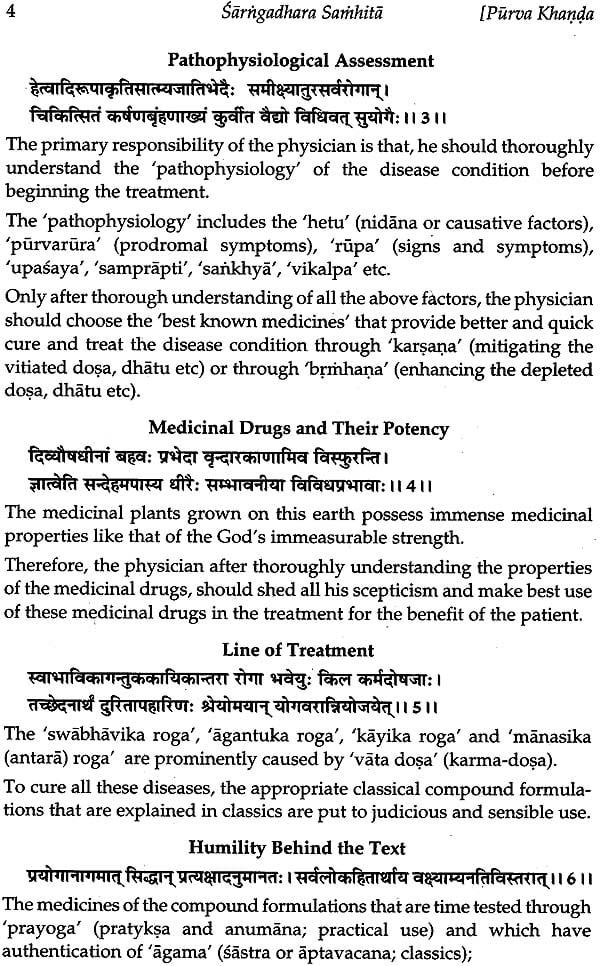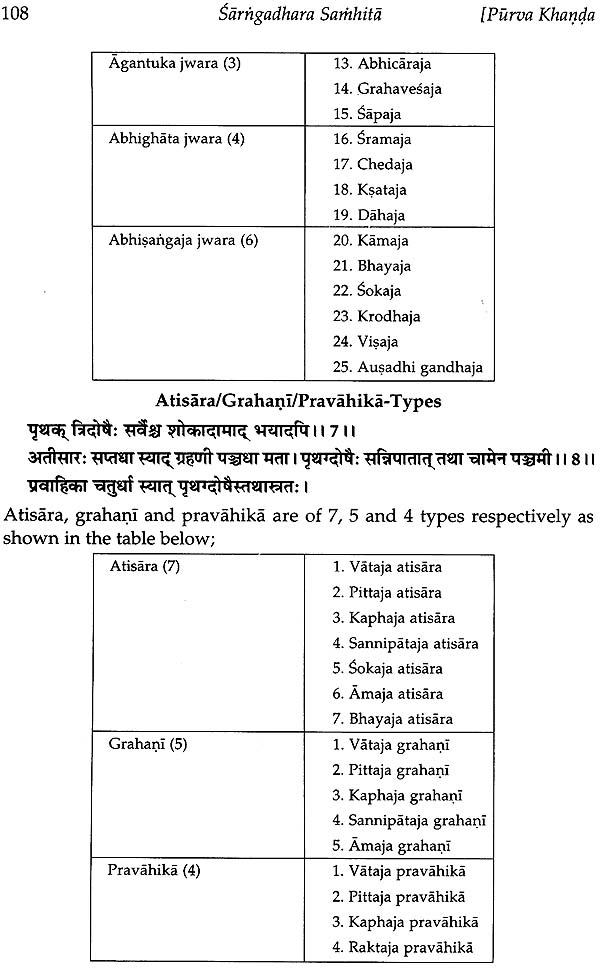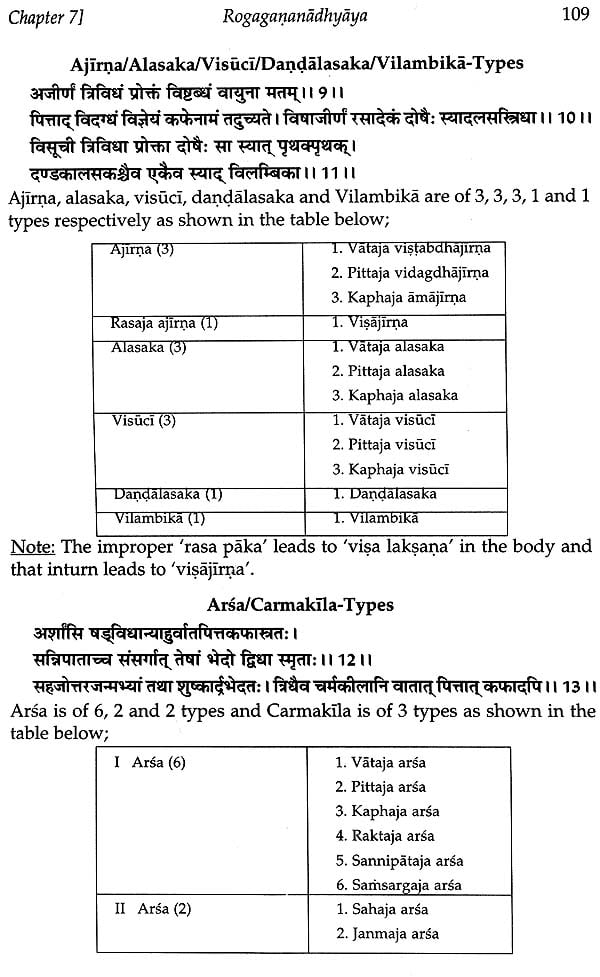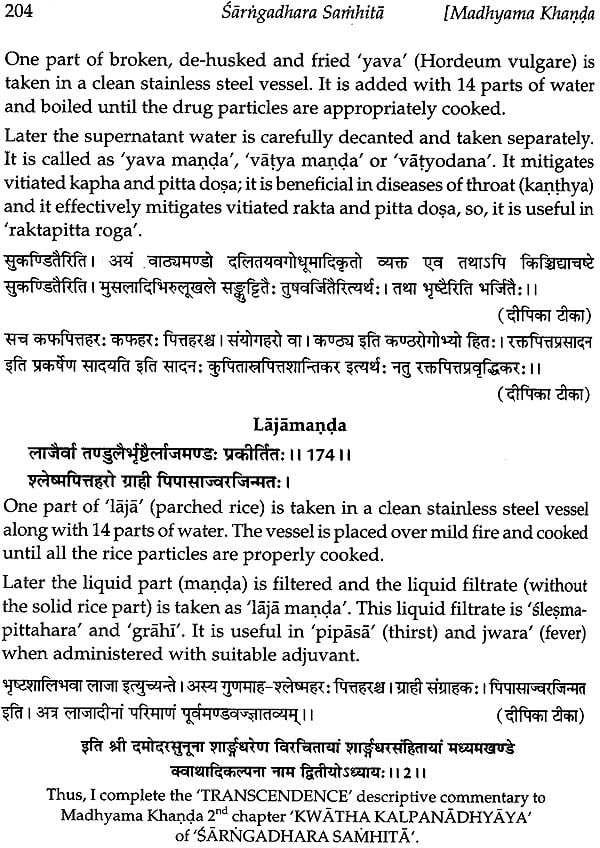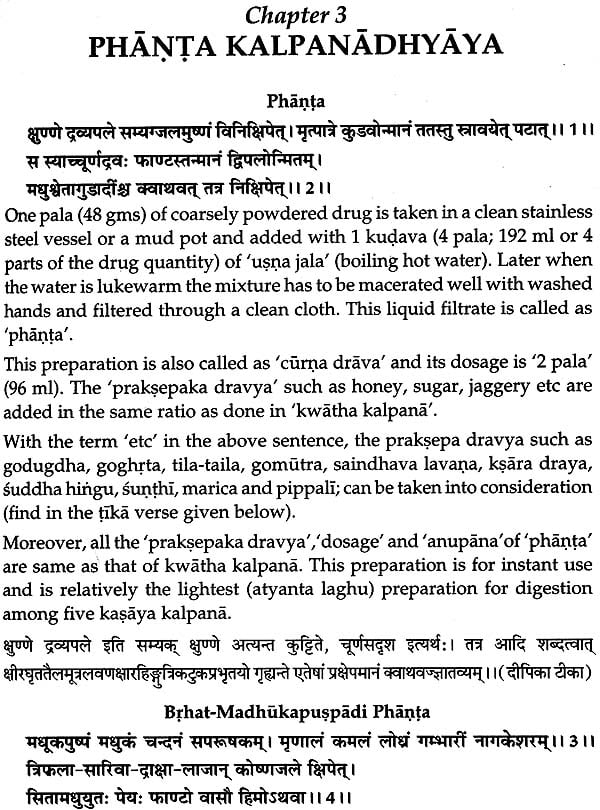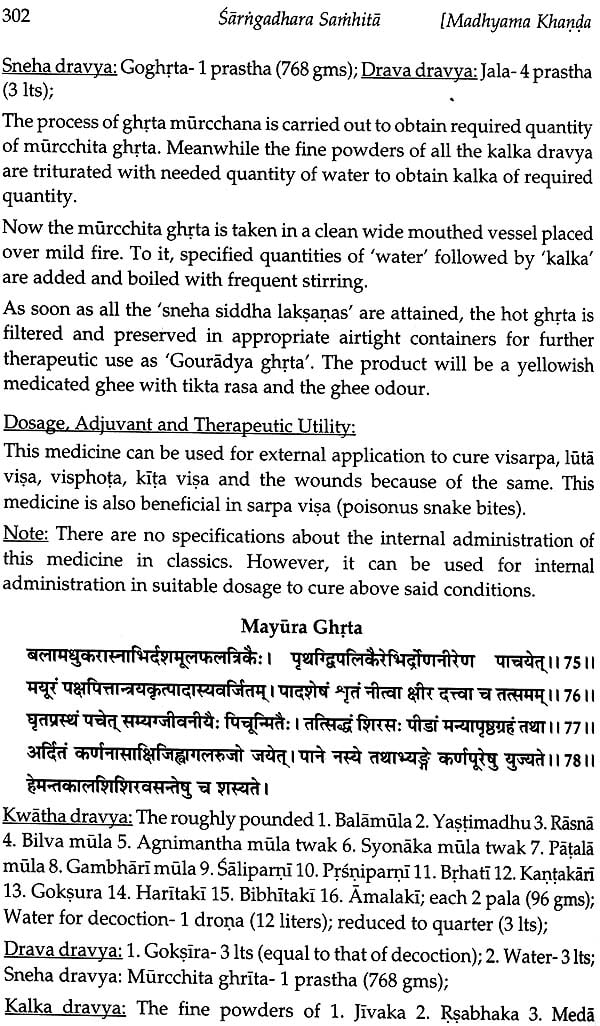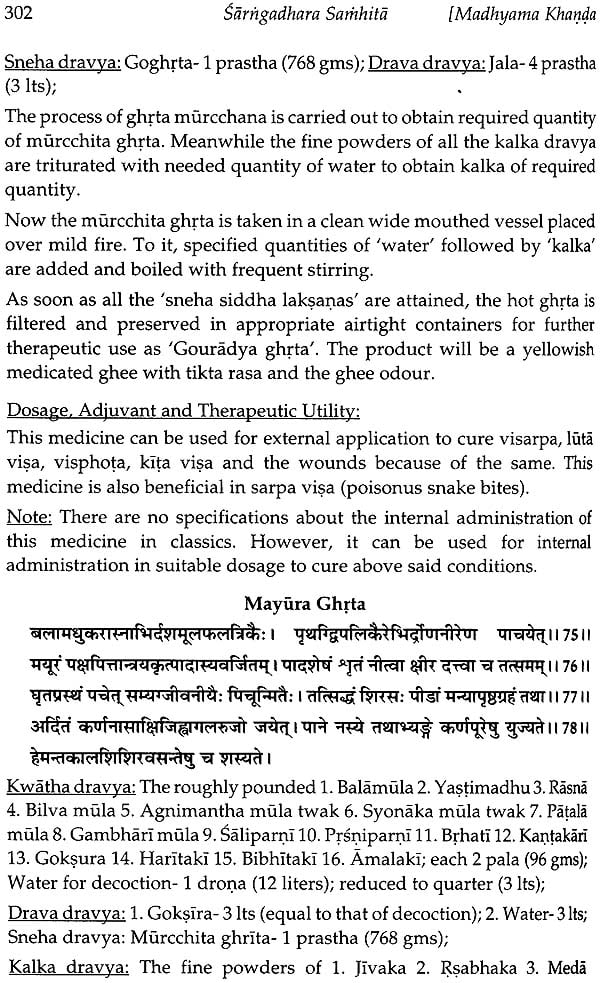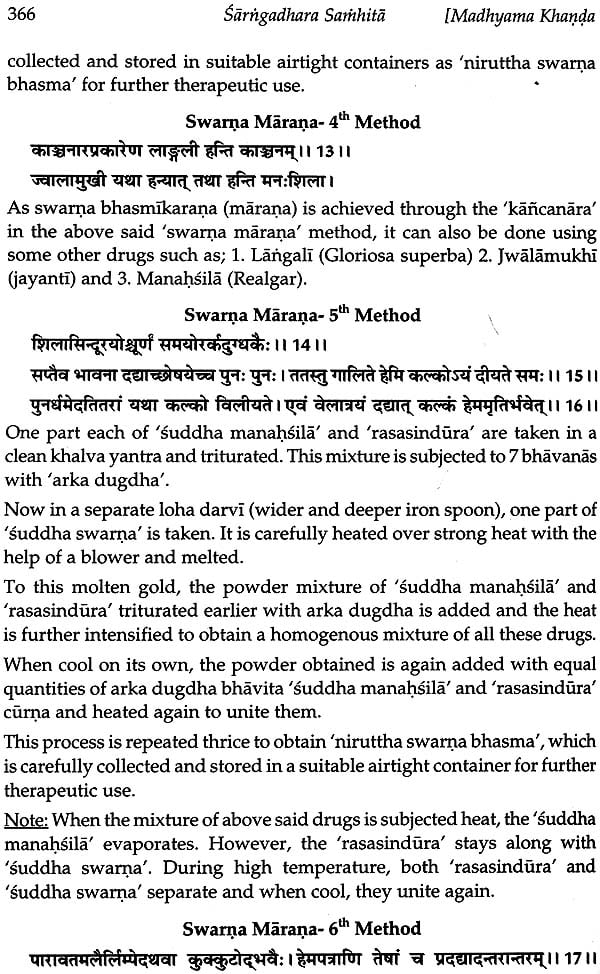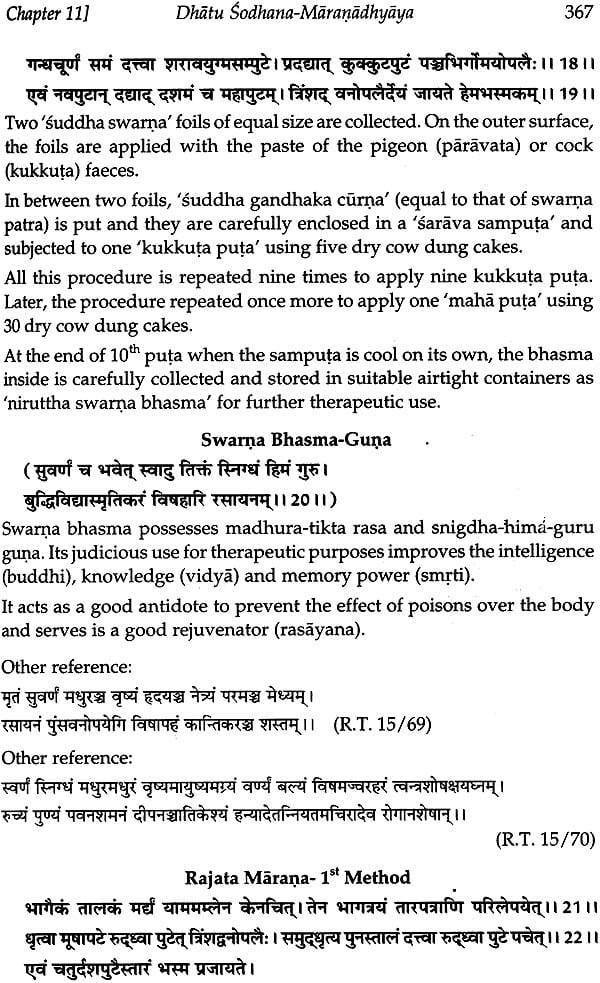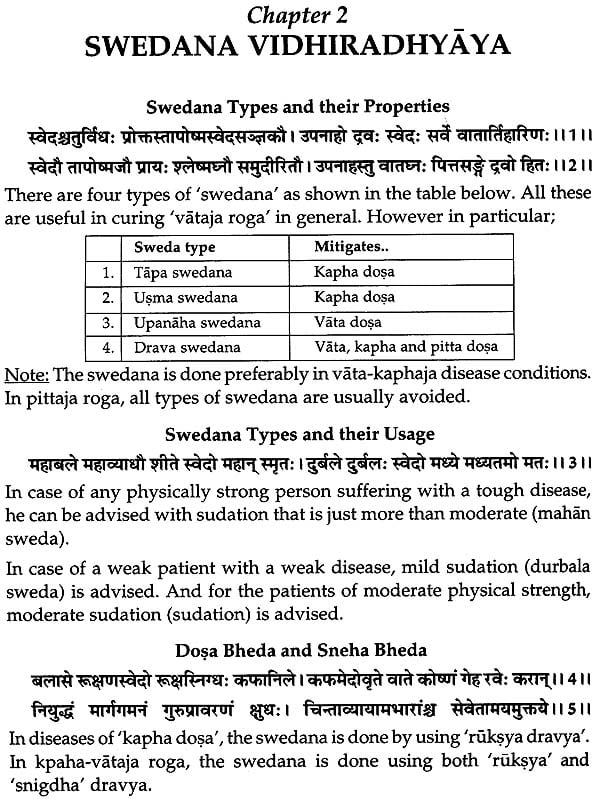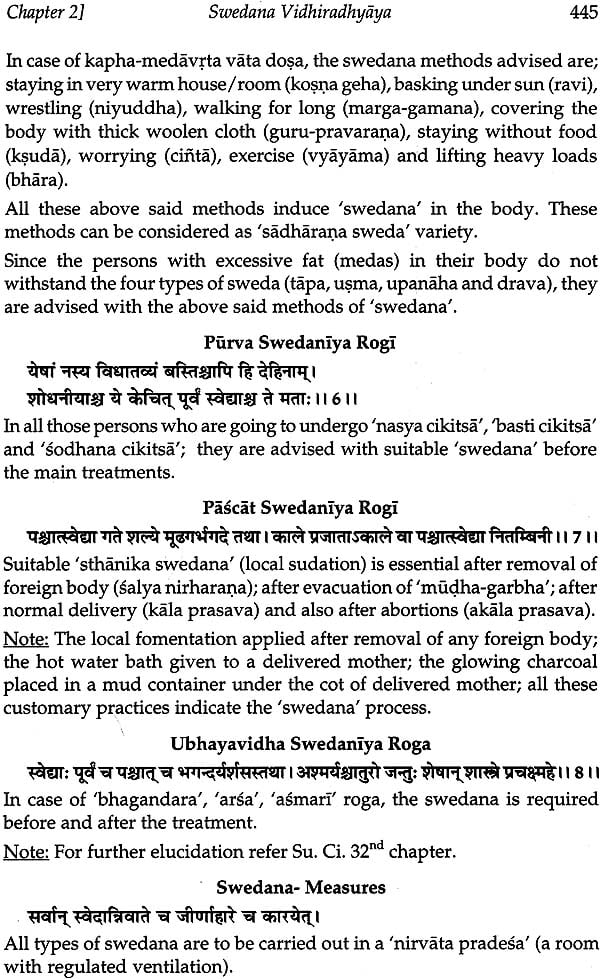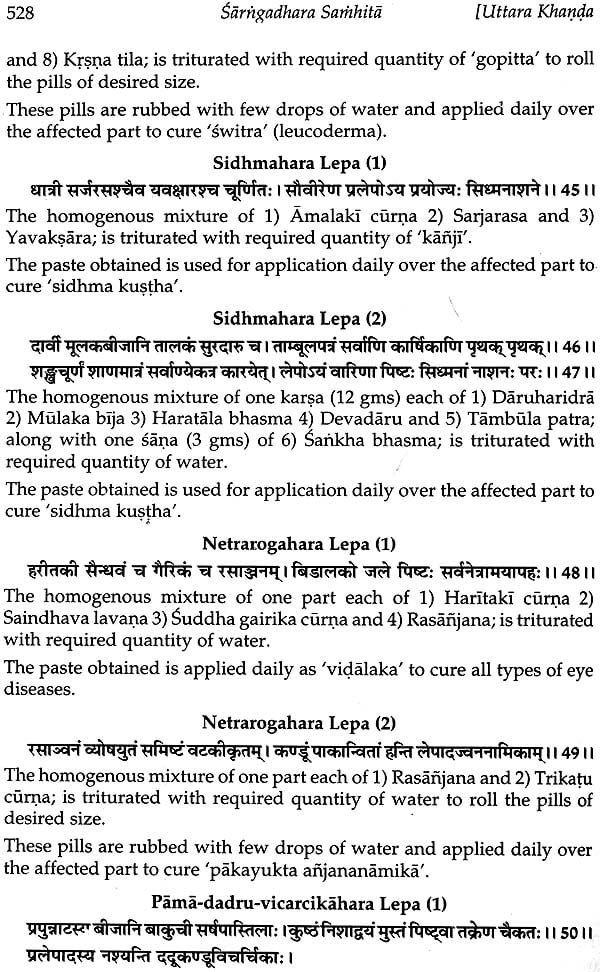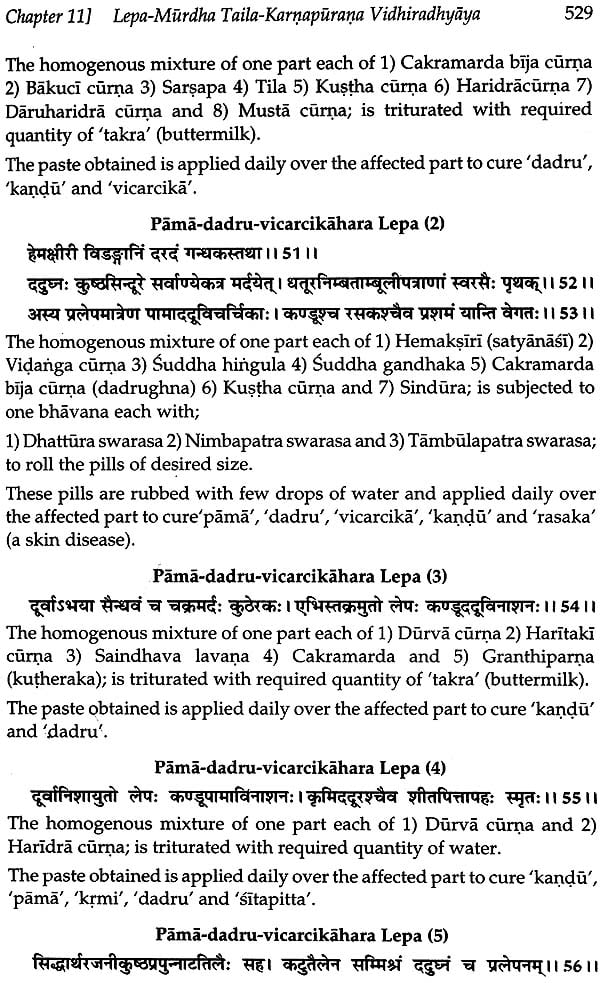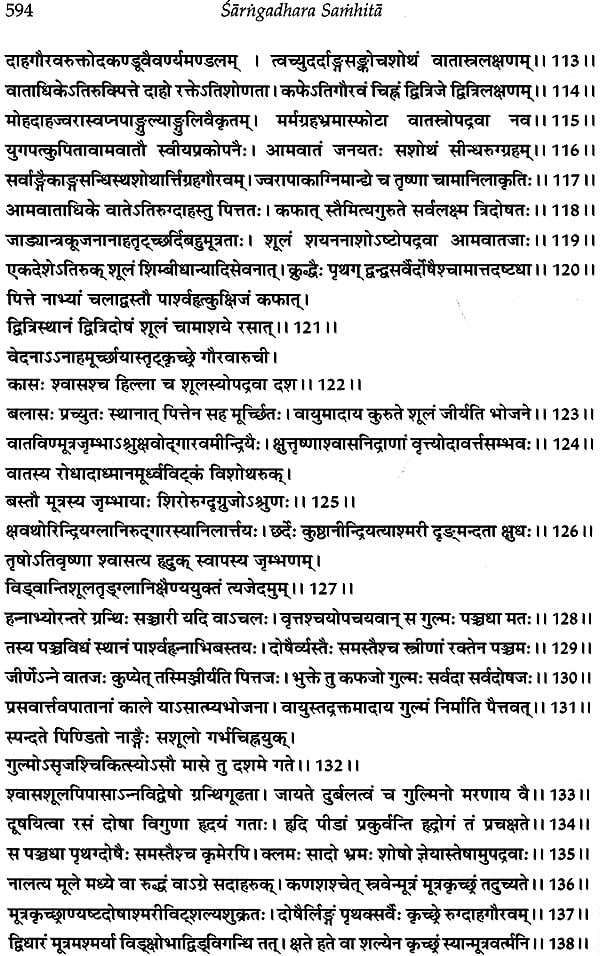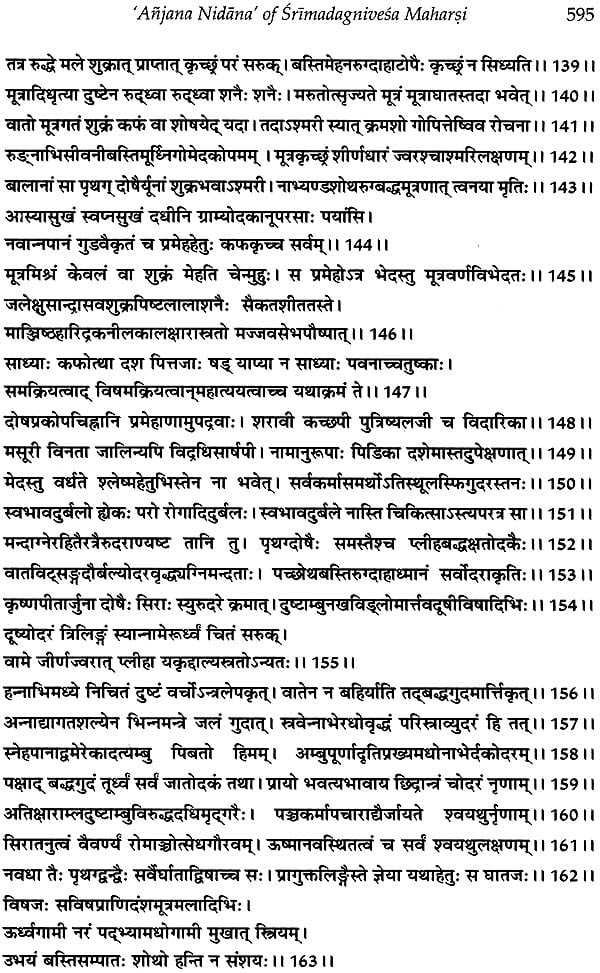
Classical Compendium of Ayurvedic Pharmaceutical Science (Sarngadhara Samhita of Acarya Sarngadhara with Transcendence Descriptive English Commentary)
Book Specification
| Item Code: | NAN783 |
| Author: | Dr. Ravindra Angadi |
| Publisher: | Chaukhamba Surbharati Prakashan |
| Edition: | 2017 |
| ISBN: | 9789386554178 |
| Pages: | 615 |
| Cover: | HARDCOVER |
| Other Details | 9.5 inch X 6.5 inch |
| Weight | 1.10 kg |
Book Description
Classical compendium of Ayurvedic Pharmaceutical Science (Sarangdhara Samhita) caters to all the basics of pharmaceutics. Innumerable number of ayurvedic pharmaceutical companies that are functional all over the world, truly depend on this book for the basics of ayurveda medicine preparation. The books of 'AFI' (Ayurvedic Formulary of India) largely borrow the information from this great book. Thus, it is the sole systematized referral book for Ayurveda pharmaceutics till date.
The present book has three sections Le. Purvakhand, Madhyamkhand and Uttarkhand. Purvakhand focuses on all the basics of pharmaceutics while Madhyamkhand widely deals with the knowledge of Ayurveda pharmaceutics (preparation of different dosage forms) and Uttarkhand meticulously reveals all the 'Pancakarma therapies' and its formulations.
Dr. Ravindra Angadi (M.D.& Ph.D. in Ayurveda) works as Professor and recognized P.G. and Ph. D. guide in Post Graduate department of Rasa- sastra and Bhaisajya Kalpana, at S. D. M. College of Ayurveda, Kuthpady, Udupi, Karnataka since 2003. His earlier literary works in the field of ayurveda are widely appreciated by ayurveda scholars and are gladly accepted by the student fraternity of Ayurveda.
Sarngadharasamhita is a book written during later parts of 13th century and earlier parts of 14th century by Acarya Sarangadhara. It is a classical compendium of 'Pharmaceutical Science in Ayurveda that caters to all the basics of pharmaceutics. Thus, it is the sole systematized referral book of Ayurveda pharmaceutics till date. It has three segments by name 'plrvakhanda', 'madhyamakhanda' and 'uttarakhanda'.
Purvakhandacontains 7 chapters. First three chapters speaks elaborately on 'manaparibhasa' (units of measurements) with other basic definitions needed for understanding the 'pharmaceutical science'. It also focusses on wide range of topics such as 'ausadha sevana kala' (chronotherapeutics); inherent drug properties and their functioning; dosasancaya, prakopa and prasama: nadi-netra-jivha-mutrapariksa: cikitsacatuspada (four pillars of treatment) etc.
Fourth chapter 'Dipanapacanadhyaya' deals in an organized way with typical definitions revealing 'agrousadhies' (drugs of choice) for wide range of ailments. Fifth and 6thchapters,'Kaladikakhyanadhyaya' and 'Maradi-gatiradhyaya' deal with the anatomical and physiological aspects of human body. The last 7th chapter of 'purvakhanda'i.e. Rogagananadhyaya meticulously enlists the wide range of diseases and their sub-types.
Madhyamakhanda is the heart and soul of this book. It has 12 chapters that are devoted to the knowledge of Ayurveda pharmaceutics. Innumerable number of minor and mightier pharmaceutical companies that produce medicines of Ayurveda, truly depend on this book for the basics of medicine preparation. The books of 'AFI' (Ayurvedic Formulary of India) borrowsall its information from this great book. This section of the book is fully devoted to the pharmaceutical aspects of Ayurveda.
First 10 chapters of 'madhyamakhanda' elaborately speak on swarasa (expressed juice of drugs), kalka (drug paste), kwatha (decoctions), hima (cold infusions), phanta (hot infusions), curna (medicinal powders), vati (pills), avaleha (confections), sneha (medicated ghee and oils) and sandhanakalpanas (fermentative preparations) along with examples of most significant formulations in each chapter. Eleventh and 12th chapters deal with metals and minerals (rasa dravya) and their pharmaceutical processing along with significant 'rasousadhies'.
Uttarakhanda contains 13 chapters. It is all devoted to 'pancakarma aspects' such as snehana (oleation), swedana (sudation), vamana (emesis), virecana (purgation), basti (enema), nasya (nasal medication), raktamoksana (blood-letting) and dhumapana (medicated smoking); along with topics such as gandusa-kavala (oral liquids and gargles), lepa (topical preparations) and netrakriyakalpas (topical eye therapies).
With all the humbleness and humility, I would like to place this great book before the readers with my 'TRANSCENDENCE' descriptive English commentary to all its concepts done with most appropriate and authentic illustration.
| Introduction | v | |
| Chapter 1 | Paribhasadhyaya | 3 |
| Chapter 2 | Bhaisajyakhyanakadhyaya | 35 |
| Chapter 3 | Nadi Pariksa Vidhiradhyaya | 49 |
| Chapter 4 | Dipanapacanadhyaya | 59 |
| Chapter 5 | Kaladikadhyanadhyaya | 67 |
| Chapter 6 | Aharadi-gatiradhyaya | 92 |
| Chapter 7 | Rogagananadhyaya | 107 |
| Chapter 1 | Swarasa Kalpanadhyaya | 155 |
| Chapter 2 | Kwatha Kalpanadhyaya | 167 |
| Chapter 3 | Phanta Kalpanadhyaya | 205 |
| Chapter 4 | Hima Kalpanadhyaya | 210 |
| Chapter 5 | Kalka Kalpanadhyaya | 214 |
| Chapter 6 | Curna Kalpanadhyaya | 222 |
| Chapter 7 | Vati Kalpanadhyaya | 250 |
| Chapter 8 | Avaleha Kalpanadhyaya | 272 |
| Chapter 9 | Senha Kalpanadhyaya | 284 |
| Chapter 10 | Sanadhana Kalpanadhyaya | 335 |
| Chapter 11 | Dhatu Sodhana Maranadhyaya | 362 |
| Chapter 12 | Rasadi sodhana Maranadhyaya | 383 |
|
|
||
| Chapter 1 | Snehana vidhiradhyaya | 433 |
| Chapter 2 | Swedana Vidhiradhyaya | 444 |
| Chapter 3 | Vamana Vidhiradhyaya | 452 |
| Chapter 4 | Virecana Vidhiradhyaya | 460 |
| Chapter 6 | Niruhana Basi vidhiradhyaya | 483 |
| Chapter 7 | Uttara Basi Vidhiradhyaya | 492 |
| Chapter 8 | Nasya Vidhiradhyaya | 496 |
| Chapter 9 | Dhampana Vidhiradhyaya | 510 |
| Chapter 11 | Lepa-Murdha Taila-karnapurana Vidhiradhyaya | 519 |
| Chapter 12 | Sonitavisravana Vidhiradhyaya | 552 |
| Chapter 13 | Netrakarmadi Vidhiradhyaya | 563 |
| Anjana Nidana of Srimadagnivesa Maharsi | 589 | |
| Index | 599 |
